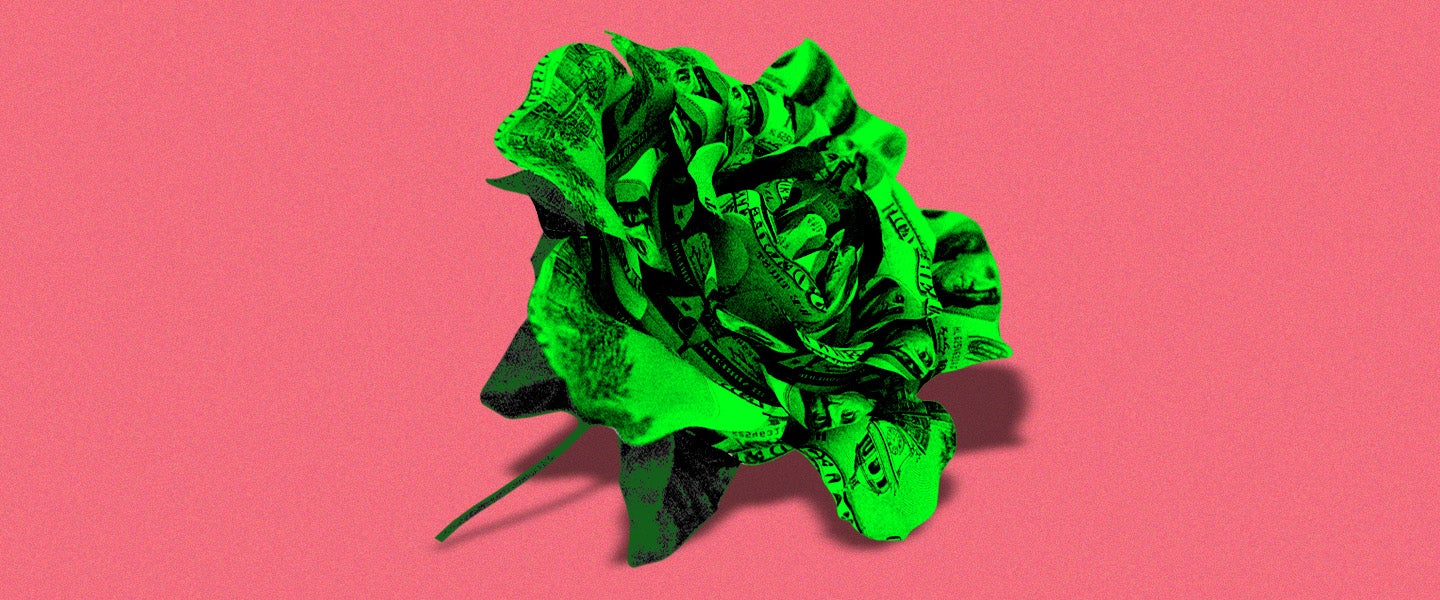There are few things as eye-wateringly painful as handing over a fistful of cash for a bunch of flowers that you could’ve got for free, if only you’d thought to sneak into your neighbor’s garden with a pair of pruning shears. Hallmark may not have actually invented Valentine’s Day, but it wouldn’t be a huge surprise if it turned out that rose growers did: Every flower shop marks up their red, long-stem roses for Valentine’s Day because the wholesalers marked it up on them, who in turn are gouged by the growers. Why do we put up with it? Just because we’re all suckers? With the help of San Diego florist Carlos Franco, we promise to get to the bottom of this thorny issue.
My neighbors grow roses in their yard. Why do flower shops charge so much for them?
Because the best roses — in fact, most of the red roses you’ll find in the U.S. this Valentine’s Day — come from Colombia and Ecuador. Yeah, there are rose growers in this country, but generally, ours are inferior: They don’t last as long, and the size of the head and the petal count pale in comparison to South American roses. Franco even has some coming from Africa this year.
Must be quite a journey from there to here.
Yes — and an expensive one. As soon as the roses are cut in South America, they’re refrigerated all the way to the plane, and fly on a long, refrigerated flight to Miami. Once there, a wholesaler imports them. Then they’re loaded onto a refrigerated truck to a refrigerated warehouse and put on another refrigerated truck or refrigerated plane bound for your nearest wholesaler before finally arriving at your local flower shop, where they’ll obviously remain refrigerated.
For roses that end up in Southern California, for example, this transcontinental, cross-country, perfectly chilled trip takes about five days from the moment they were cut.
So it’s not exactly a small environmental footprint, then.
Indeed not. In addition to the flights and drives, they’re dry-packed, meaning 25 are put into a cardboard box (they pack two dozen together, with an extra in case one breaks), and spend several days straight in air conditioning. Some higher-end wholesalers ship them upright in boxes, which also isn’t particularly sustainable. “There’s something to be said about the carbon footprint of basic guys needing a dozen red roses,” Franco says, cuttingly.
Is all that travel why they’re so expensive?
Relatively speaking, roses aren’t expensive — if you count by the stem, roses are half as much as, say, a gerbera, and the profit margin is the same across varieties. Single roses aren’t a cash cow. But almost no one except for Bachelor and Bachelorette contestants expect to receive a single rose: Tradition dictates that we multiply by 12, and when love and lust are on the line, well, allowances must be made, goddammit.
Why?
Franco says to blame the Victorians. “Because they were so repressed, they used flowers to convey their heartfelt feelings and desires,” he says. And red roses meant love. For some reason, we’re still carrying on this same tradition more than a hundred years later. Also, 12 is a significant number — there’s 12 hours on a clock, 12 zodiac signs, 12 months a year, etc., and 12 roses is meant to show that you’re thinking of your Valentine all the time.
Franco prefers to mix it up — a dozen roses of different shades of red, or different shades of pink, or even ombréd roses, “so it doesn’t look like your regular FTD dozen roses,” he says.

And roses get marked up a lot for Valentine’s Day just because we’re suckers, right?
Sort of. Giving a dozen long-stem red roses is such a built-in tradition that it’s ripe for price gouging. Franco doesn’t even push roses that much because he gets tired of having people think he’s ripping them off. In fact, he doesn’t mark up red roses at all on Valentine’s Day for that exact reason — he simply keeps them at a premium price year round. Because since growers mark up the prices for wholesalers around Valentine’s Day, and wholesalers double the prices for sellers, Franco’s profit margin on roses plunges every February.
It’s the growers, then, who are behind this?
Oh yeah — just like how Target and Walmart depend on Christmas to make their nut for the year, flower growers ride Valentine’s Day like a runaway gravy train. Franco and other florists refer to Valentine’s Day week as Super Bowl week, thanks to a huge spike in business.
Are red ones the most expensive?
On Valentine’s Day, yes, just as a simple function of supply and demand. And the demand is insatiable — if one buyer won’t pay the jacked-up prices, wholesalers will find another buyer who surely will. But other times of the year, wedding season being a great example, there’s a surcharge on white roses. There are other factors, too: Exclusive varieties that can be costly, or different sizes of roses. But on color alone, there isn’t a huge difference.
Why are long-stem roses more expensive?
The longer the rose, the higher the price. They need more time to grow, they’re more labor intensive to pack and ship, they require more packaging and they end up weighing a bit more.
So this whole thing is kind of a vicious circle?
Yeah — on the one hand, Franco somewhat blames the consumer, saying it’s a bit lazy to just order a dozen red roses and then complain about how expensive they are. But of course, most every rose giver feels trapped by the expectations of the recipient. So here we are: Flying flowers across the world in refrigerated airplanes and too much packaging so that people can gift pristine roses every Valentine’s Day simply because everyone expects to either give or receive them. Just like the Victorians used to do, we go ahead and “say it with flowers.”

